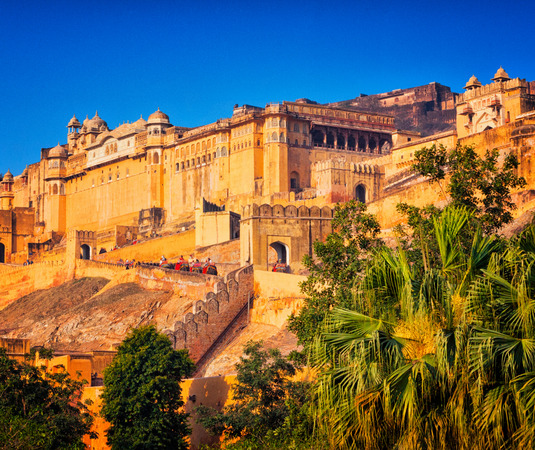
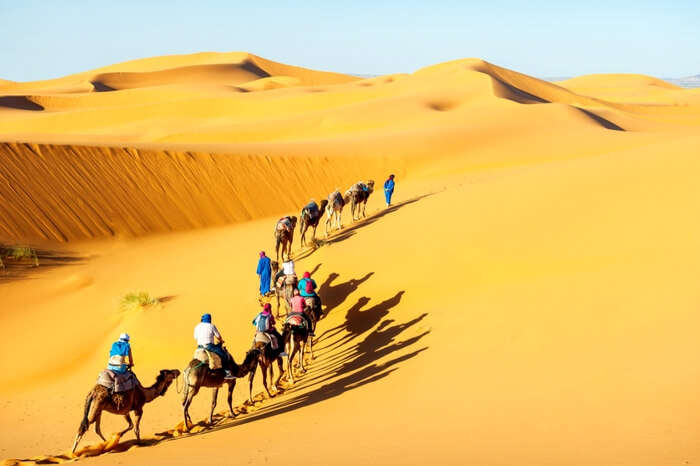
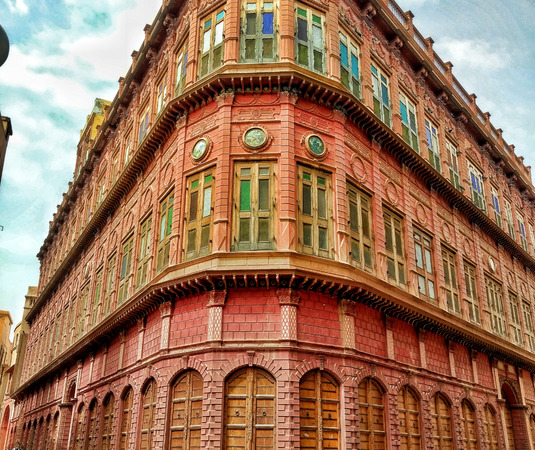
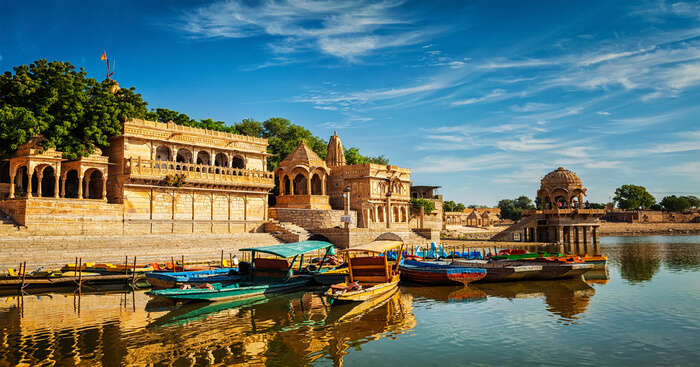

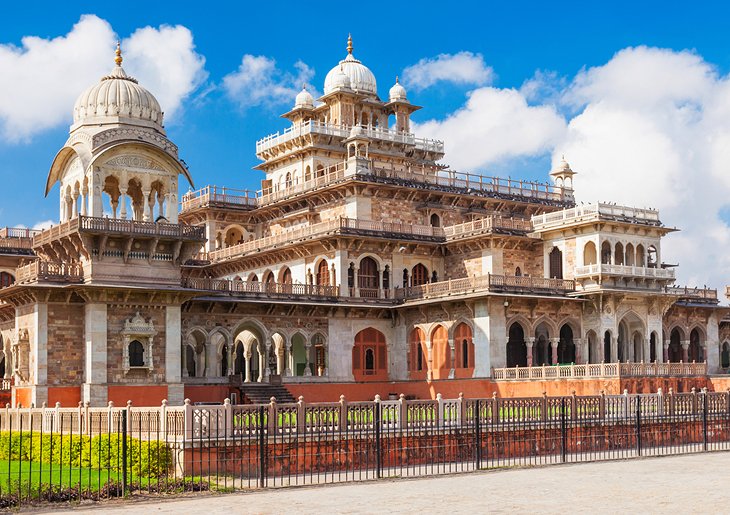
Tour Overview
Rejuvenating Rajasthan
0 Review |
Tour - Itinerary
Our main Tour's Days Schedule
Today arrive at Jaipur and transfer to your hotel.
The capital of Rajasthan Jaipur - popularly known as the "Pink City" as the Pink sandstone was used to construct the buildings in the old walled city. Jaipur owes its name, it"s foundation and it's planning to the Great- Warrior-Astronomer Maharaja Jai Singh II (1699–1744 AD). Jaipur (City of Victory) was founded by Maharaja Sawai Jai Singh II in 1727. It is the only city in the world symbolising the nine divisions of the Universe through nine rectangular sectors sub-dividing it. The architect who formalised the city's plans on the Shilpa Shastra, the epic Hindu treatise on architecture, mixed it with the sublimity of the Mughal and Jain influences of those times. The city was painted pink in 1853 in honour of the visit by Prince Albert. Except for the busy traffic of bicycles, cars, and buses, little seems to have changed. Stay overnight at the hotel.
After breakfast proceed for full day city tour of Jaipur – visiting Amer Fort located at a distance of 11 kilometres from Jaipur and was the old fort of the Kachhwaha clan of Amber. It used to be the capital, till it was moved to Jaipur. The fort is built with white marble and red sandstone and looks even more attractive because of the Maota Lake in the foreground.
The fort in itself is a beautiful sight to behold but as one looks on the fort with its clear reflection on the lake in the front; one cannot help but wonder if it is a dream or a beautiful illusion. An elephant [Subject to availability/alternatively by jeep on direct payment basis] will spare you the trouble of climbing up to the fortress. Once on top, stroll through the sprawling complex of courtyards and halls with a well informed and well-spoken guide who would regale you with tales of yore.
Later visit the City of Jaipur. Among the highlights to be seen while touring Jaipur include the City Palace, which is an overwhelming complex of exquisite palaces, gardens and courtyards, decorative art and carved doorways. The palace museum houses collections of rare manuscripts, armours, costumes, carpets and miniature paintings. Walk to the adjacent Jantar Mantar or Astronomical Observatory made by the Maharaja of Jaipur, built in 1726 and is one of the five such astronomical wonders built by Sawai Jai Singh and makes accurate predictions even to this day.
Jaipur is a shopper's paradise. Most of the bazaars are in an old city with a wide range of things to buy, from jewellery (precious and semi- precious stones and handcrafted silver) to textiles to handicrafts and antiques. No doubt, for an avid shopper "Jaipur" is the choicest of the city to shop and collect memorabilia. Stay overnight at the hotel.
Today get ready for an early start to Bikaner. On arrival, check in at the hotel. Proceed for a sightseeing tour of Bikaner, founded by Rao Bikaji. Visit the Junagarh Fort housing opulent palaces giving you a peek into the lives of the Maharajas. Junagarh Fort includes Anup Mahal, Gaj Temple, Sheesh Mahal, Prachin Museum and Lalgarh Palace too. The city is also called the "Camel Country". Visit the camel-breeding farm - the only one in Asia (Asia's biggest camel breeding farm). Stay overnight at the hotel.
After breakfast leave for the city tour of Jaisalmer.
Before Arrival in Jaisalmer 15 KMS BEFORE you will visit the War museum to showcase bravery of Army - Jaisalmer War Museum has been established in the military station of Jaisalmer to showcase the traditional bravery of the Indian Army and also to commemorate the sacrifice of its heroes’ displaying valour and courage of exceptional order during India wars. The Indian Army has set up a historical war museum in Jaisalmer. This war museum, which is the first-of its-kind on the western front, traces the evolution of the Indian Army and covers in detail its inspiring contribution in mainly 1965 Indo-Pak War and 1971 Longewala battle including all combat operations and other nation building activities Stay overnight at the hotel.
Visit the famous Havelis (mansions) known for their frescoes. Jaisalmer's strategic position on the camel terrain route bought it great wealth. The merchants grew prosperous and commissioned great havelis, or mansions, to flaunt their ever-growing status in society. Made of local golden-yellow sand stone and wood, some of the havelis are still in excellent condition. The most elaborate and magnificent of all the Jaisalmer havelis is the Patwaon Ki Haveli. Five Jain brothers built the Haveli between 1800 and 1860. Salim Singh Ki Haveli and Nathmal Ki Haveli are the other two havelis that are open to visitors.
Built in 1156 by the Bhatti ruler, Jaisal, The Fort here stands atop the 80 m high Trikuta hill. 3 walls and 99 bastions surround the fort. Over the centuries, the golden sand stone fortress witnessed many battles between the Bhatti Rajputs, the Mughals and the Rathores of Jodhpur. Within the fort, complex is the beautifully carved Jain Temples built between the 12th and 15th centuries. The Maharawals (rulers) of Jaisalmer were devout Hindus but were tolerant of Jainism, and encouraged art and religion. There are 7 temples in the complex - Chandraprabhu, Parasnath, Shitalnath, Sambhavnath, Shantinath, Kunthunath and Rikhabdev Temple.
The temples are all connected by a series of corridors and walkways. Close by is the Gyan Bhandar, a library founded in 1500 A.D. This houses priceless ancient manuscripts and other exhibits like astrological charts, besides the Jain equivalent of the Christian Shroud of Turin.
In the evening, proceed for the excursion to Sam Sand dunes. Located at a distance of 42 kilometers from Jaisalmer, Sam Sand Dunes is the closest point to witness the total sandy desert. You can also see the patterns and motifs created by the shifting sands and air. Moreover, Sam Sand Dunes also provide you with an unforgettable experience of camel rides and the sunset. Stay overnight at the Camp
After breakfast drive to Jodhpur - Arrive at the Blue City – Jodhpur and transfer to your hotel.
An oasis in the arid Thar Desert, Jodhpur is the second largest city in the state of Rajasthan. Representing this colourful city with shades of blue, Jodhpur has a history that is rich and a present that beckons strongly to the discerning tourist. Forts and palaces, temples and havelis, culture and tradition, spices and fabrics, colour and texture, Jodhpur has them all and in plenty. Situated in Western Rajasthan, Jodhpur has long attracted both the domestic and international tourist. It not only offers tangibles, in terms of what you can see and buy but also fills one with a sense of history and the splendour of an era gone by. The hospitality of the locals, the demure women, and the colourful turbans -all set against the beloved desert (Marwar) is something to feel, not just see. Every pore of Jodhpur tells its own tales of heroic deeds that made legends out of kings and soldiers, romances that continue to warm the heart and a time when epics were lived out on the streets by everyday man.
Visit Sardar Bazaar and Clock Tower markets where you can see the vegetable, spice, Indian sweets, and textile and silver markets. These colourful markets with tiny shops dot the narrow lanes replete with woodcarvings, wrought iron, lacquer work, silver and ivory ornamentation and leather handicrafts. Stay overnight at the Hotel.
After breakfast checkout & proceed for half day city tour of Jodhpur. Visit the Mehrangarh Fort, situated on a low sandstone hill. The palace apartments like Sukh Mahal, Phool Mahal, and Sheesh Mahal etc are beautifully decorated and house jewellery, costumes, armoury, palanquins, howdahs and other remnants of the past. See the Jaswant Thada, an imposing marble memorial to Maharaja Jaswant Singh II built in 1899. Later the royal crematorium and three other cenotaphs were also built here.
Early afternoon continue on your journey to Udaipur. Arrive into Udaipur and check in to your hotel. Stay overnight at the Hotel.
After breakfast proceed for Full day city tour of Udaipur – visiting the City Palace and Museum. The largest palace complex in India, it is a blend of Mughal and Rajput influences. -The most impressive attraction in Udaipur is the magnificent City Palace which is now a museum and houses fine art works in glass mosaics, and miniature paintings, of which Udaipur is famous, depicting glories of an ancient past. The City Palace, Built by the Maharana Udai in 1559, The City Palace is located on the east bank of Lake Pichola. Fused with Rajasthani and Mughal architectural styles, the Palace is considered the largest of its type in Rajasthan. The Palace has various towers, domes and arches which add to the flavour of the heritage site. It is a marvelous assortment of courtyards, pavilions, terraces, corridors, rooms and hanging gardens. Often distinguished as the largest palace complex in Rajasthan, this majestic piece of architecture is one of the most visited tourist attraction. Crystal Gallery -Situated at the Fateh Prakash Palace, the Crystal Gallery houses an extravagant collection of crystals. It is an unused collection that includes crystal chairs, sofas, tables and even beds. Other precious items include crystal dressing tables, chairs, crockery, table fountains and even the regal beds. In 1877, Maharaja Sajjan Singh ordered this rare crystal from in England but died before the package arrived. JAGDISH TEMPLE -The Jagdish Temple is a great focal point for the Hindu people of Udaipur. The temple is dedicated to Vishnu, The Jagdish Mandir is an excellent example of Indo - Aryan architecture. One of the popular tourist attractions on the map of Rajasthan, the Jagdish Temple is a large Hindu temple located in the heart of Udaipur. It enshrines a black stone image of Lord Vishnu, considered as ‘The Creator’ in Hindu mythology. Sahelion Ki Bari -Sahelion Ki Bari, also known as ‘Courtyard of the Maidens’ is a popular tourist attraction in Udaipur, Rajasthan.
Set below the embankment of the Fatah Sagar Lake, the gardens is decorated with beautiful lotus pools, elephant-shaped fountains, paintings, glass mosaics and marble pavilions. Legend says, the king himself designed this garden and presented it to the queen. Shilpagram -Shilpagram in Udaipur can be literally translated as the ‘Craftsmen’s Village’. It depicts the lifestyle of the folk and tribal people of the West Zone. Stay overnight at the Hotel.
After breakfast, the day is free until transferred to Airport for your onward journey to the next destination


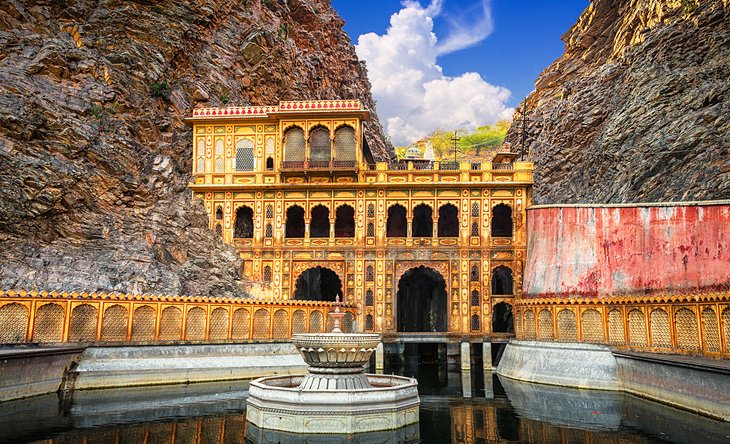
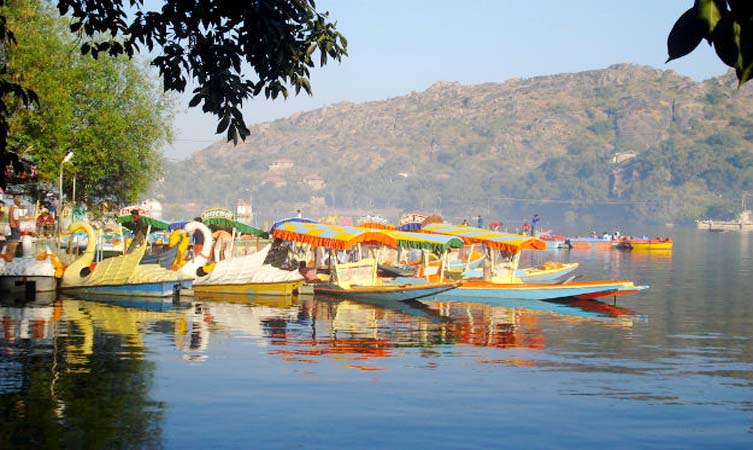
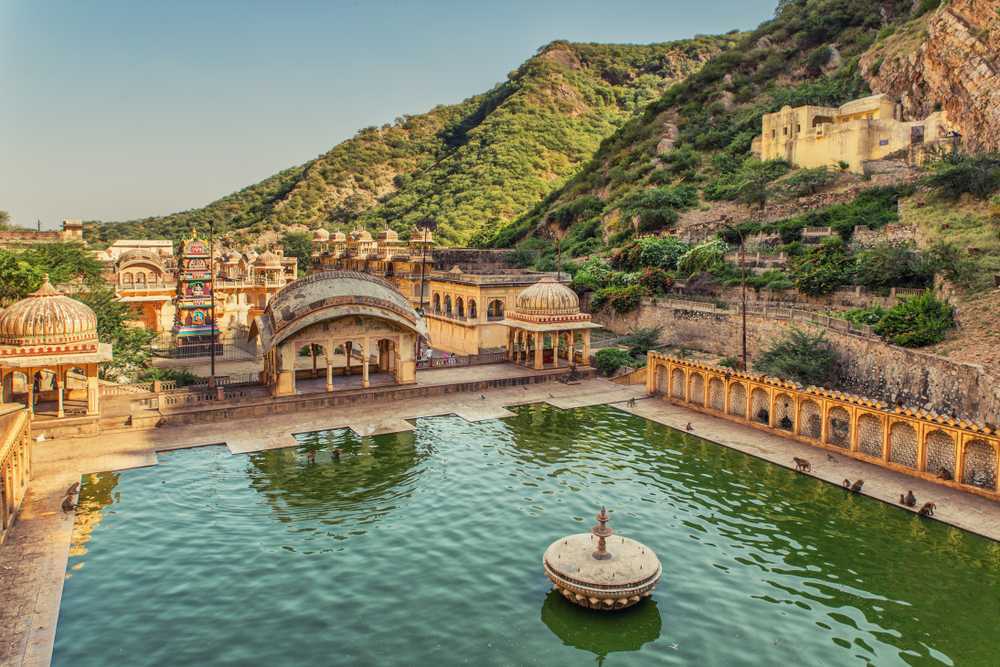
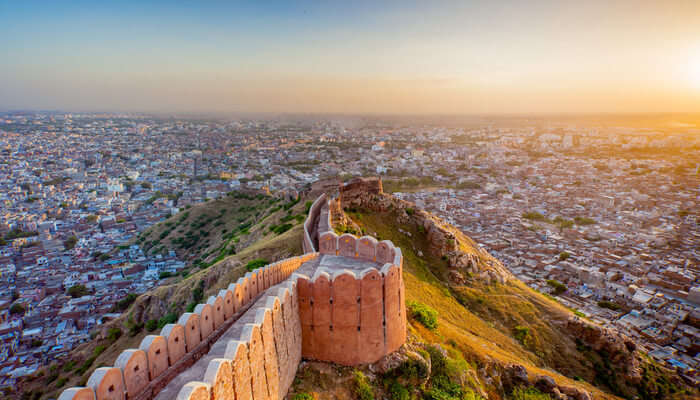
.jpg)
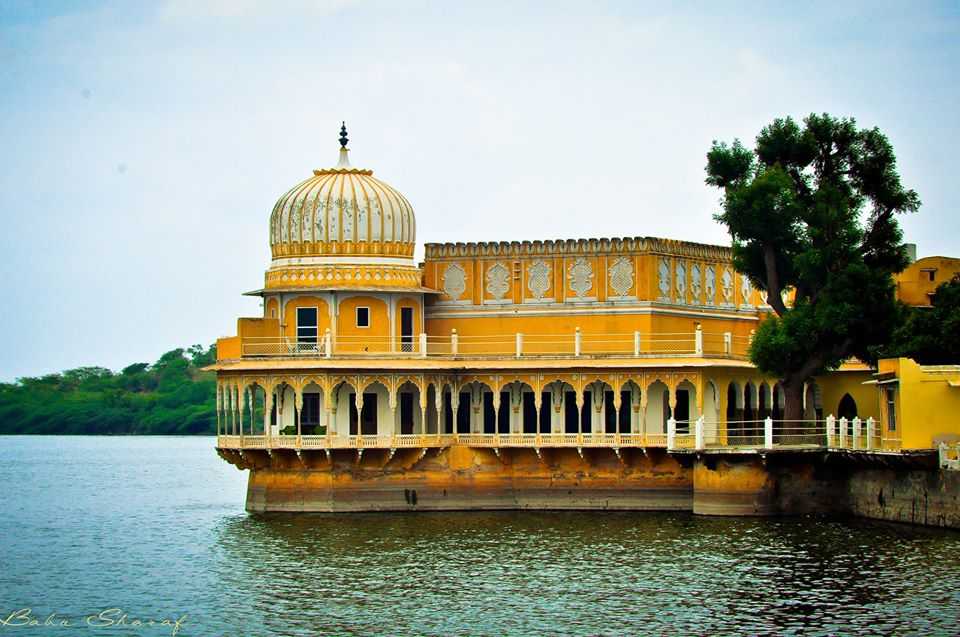
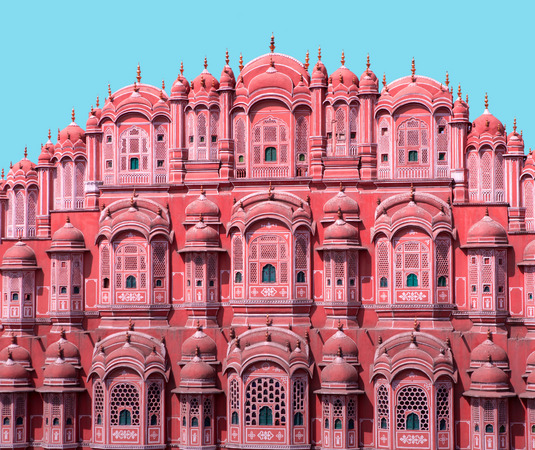
.jpg)

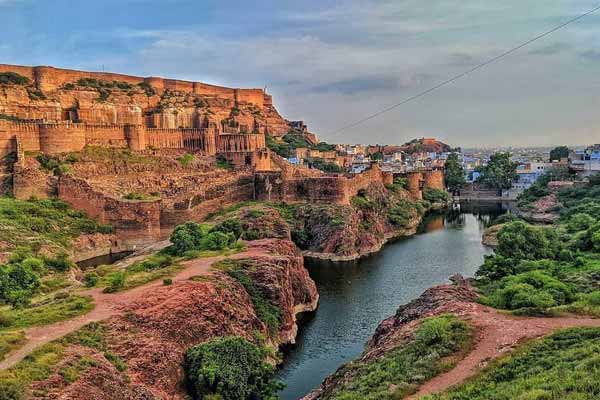
.jpg)

No Reviews Found